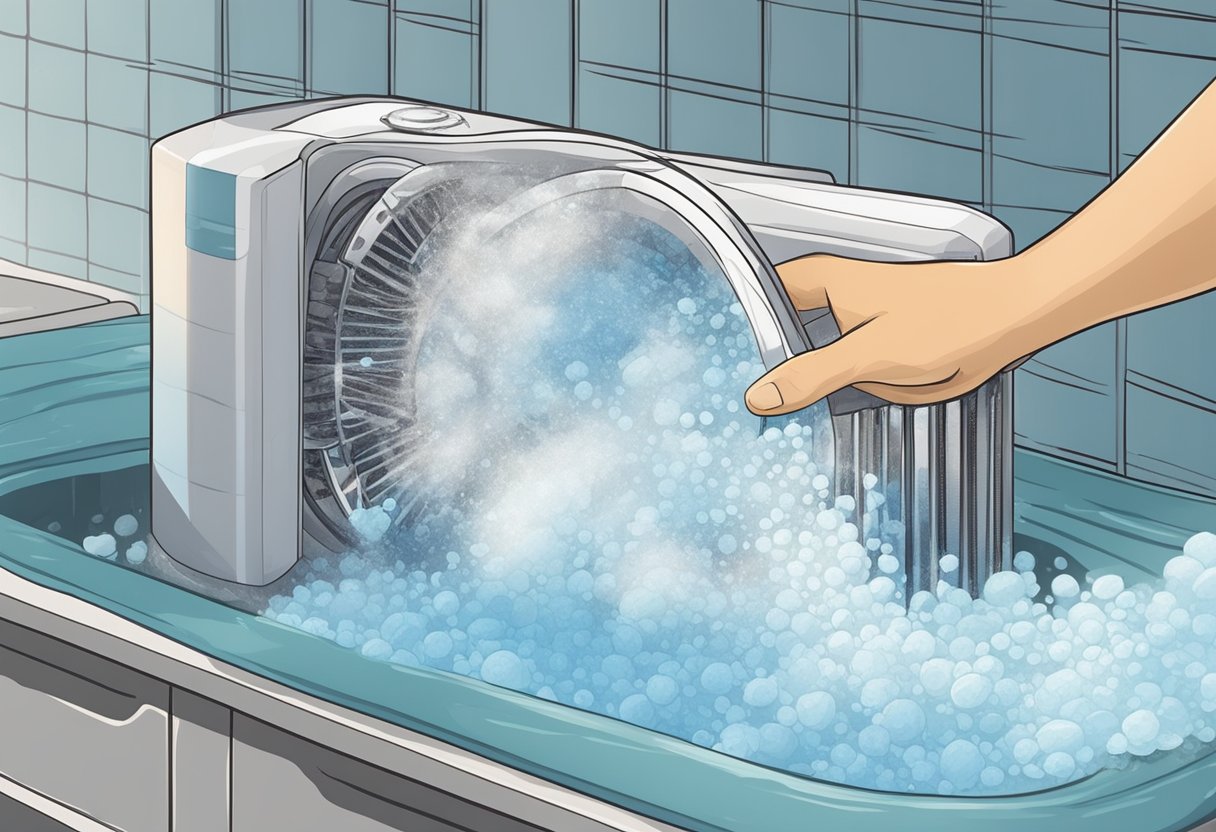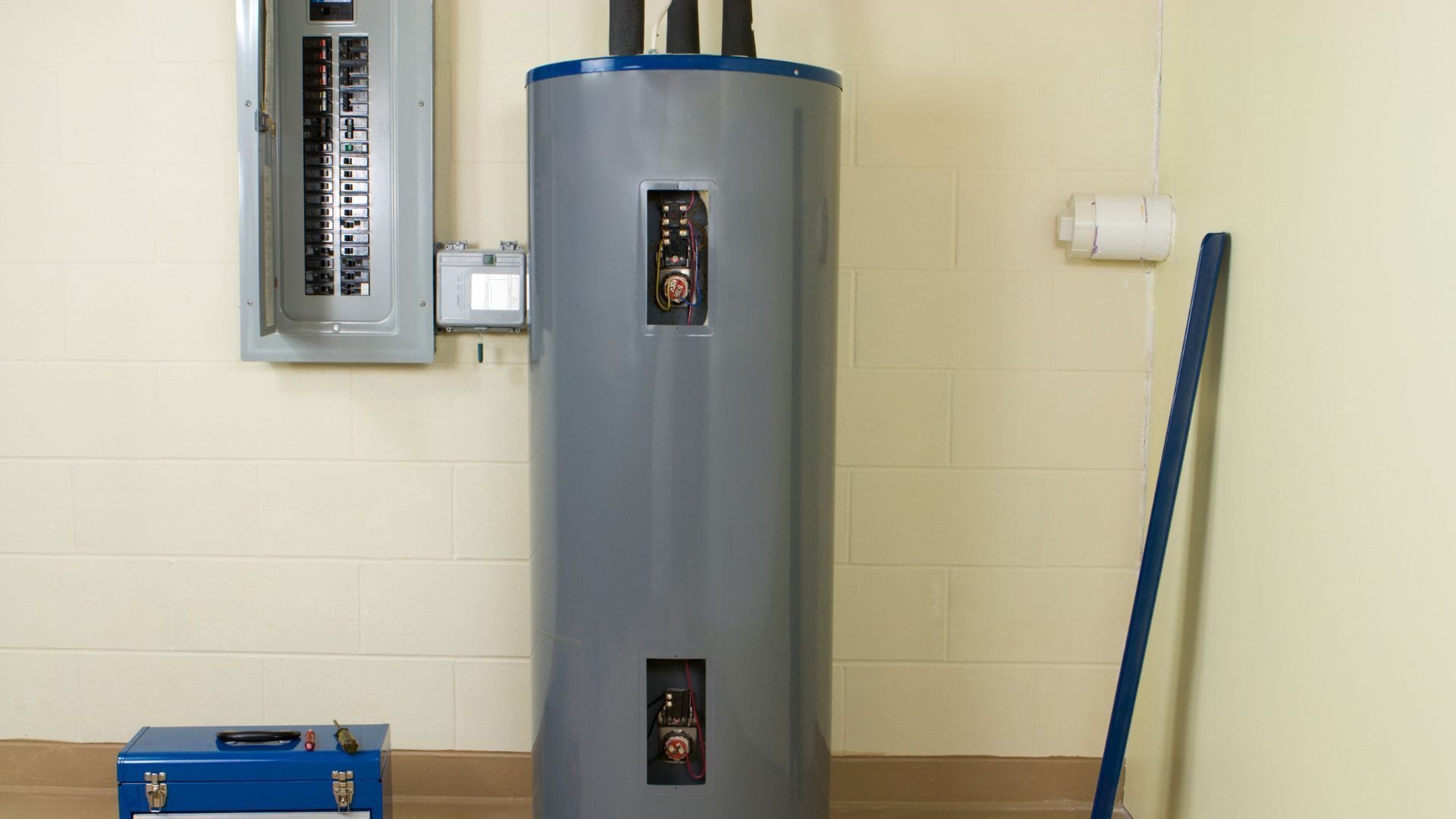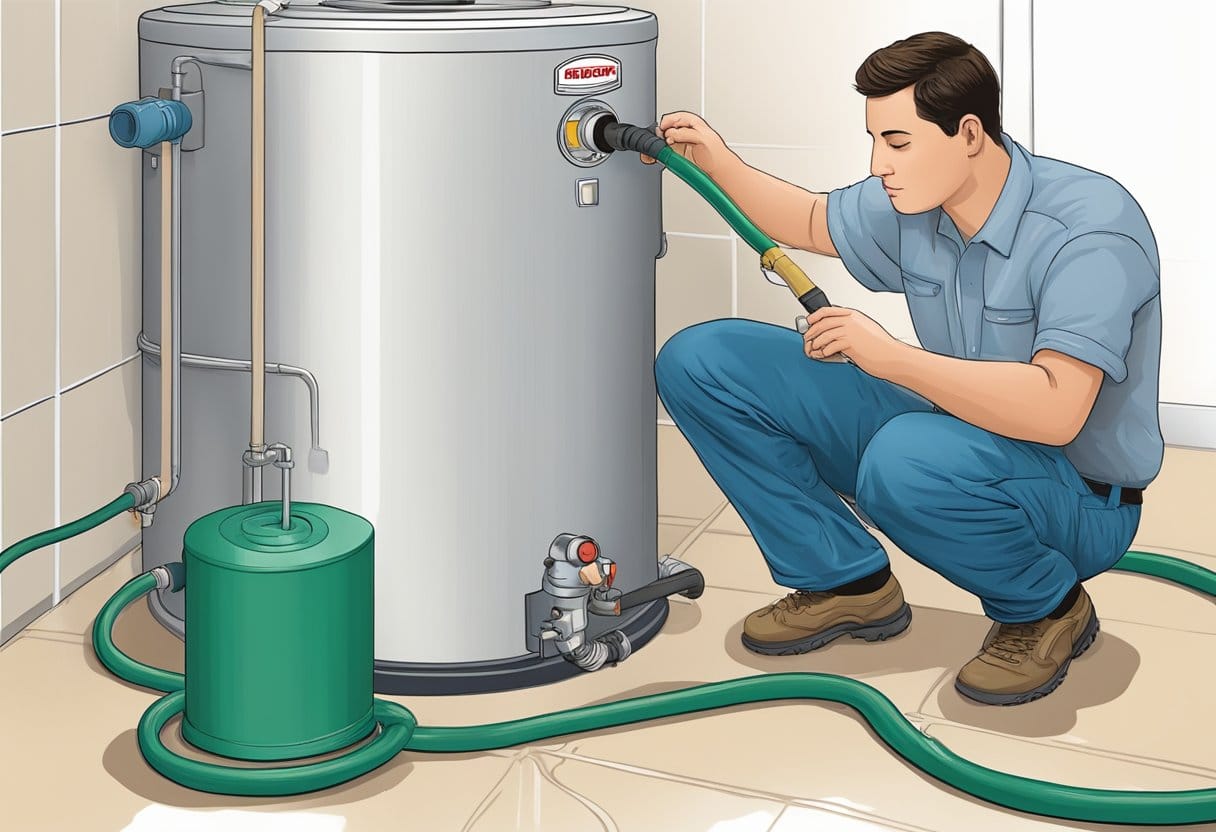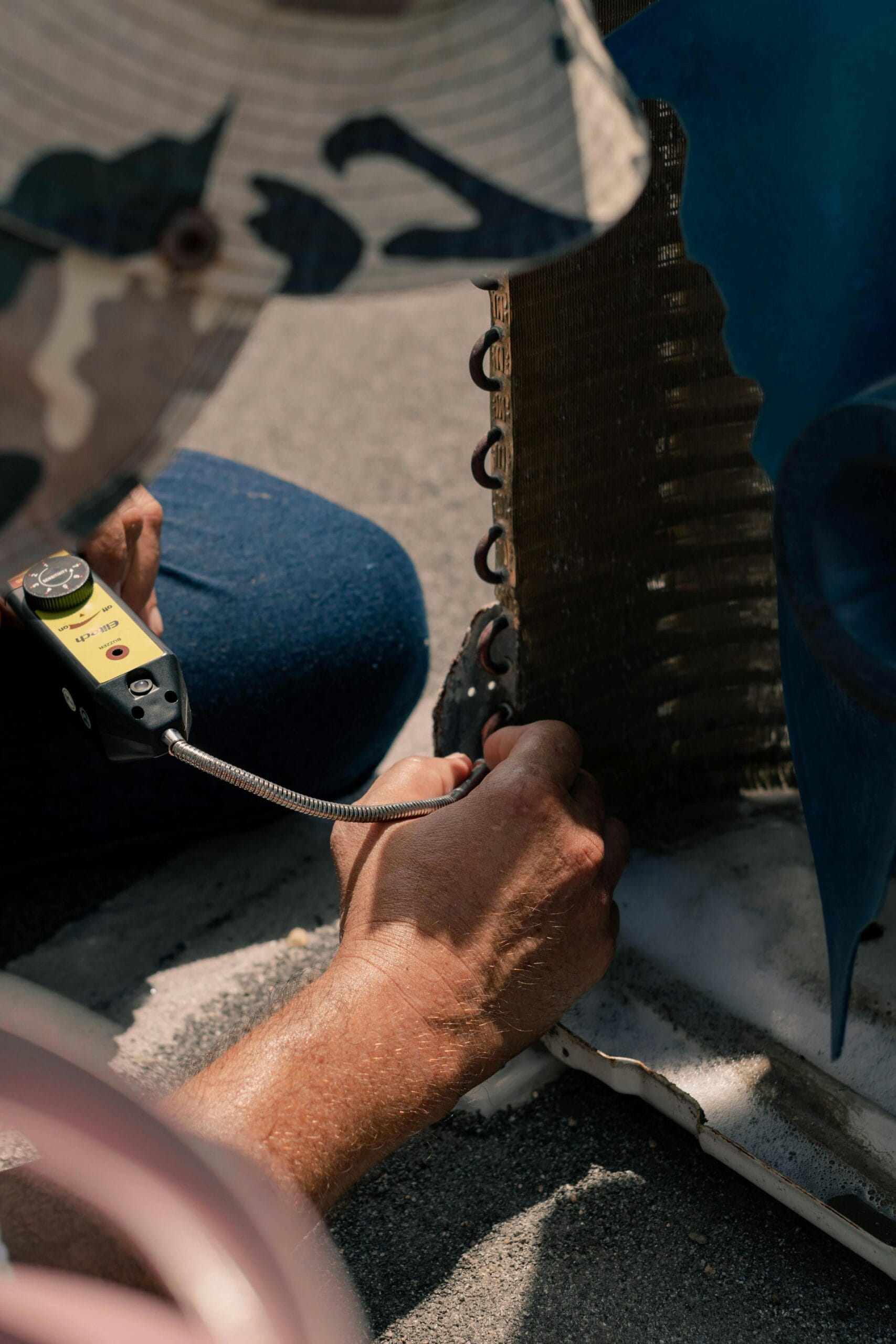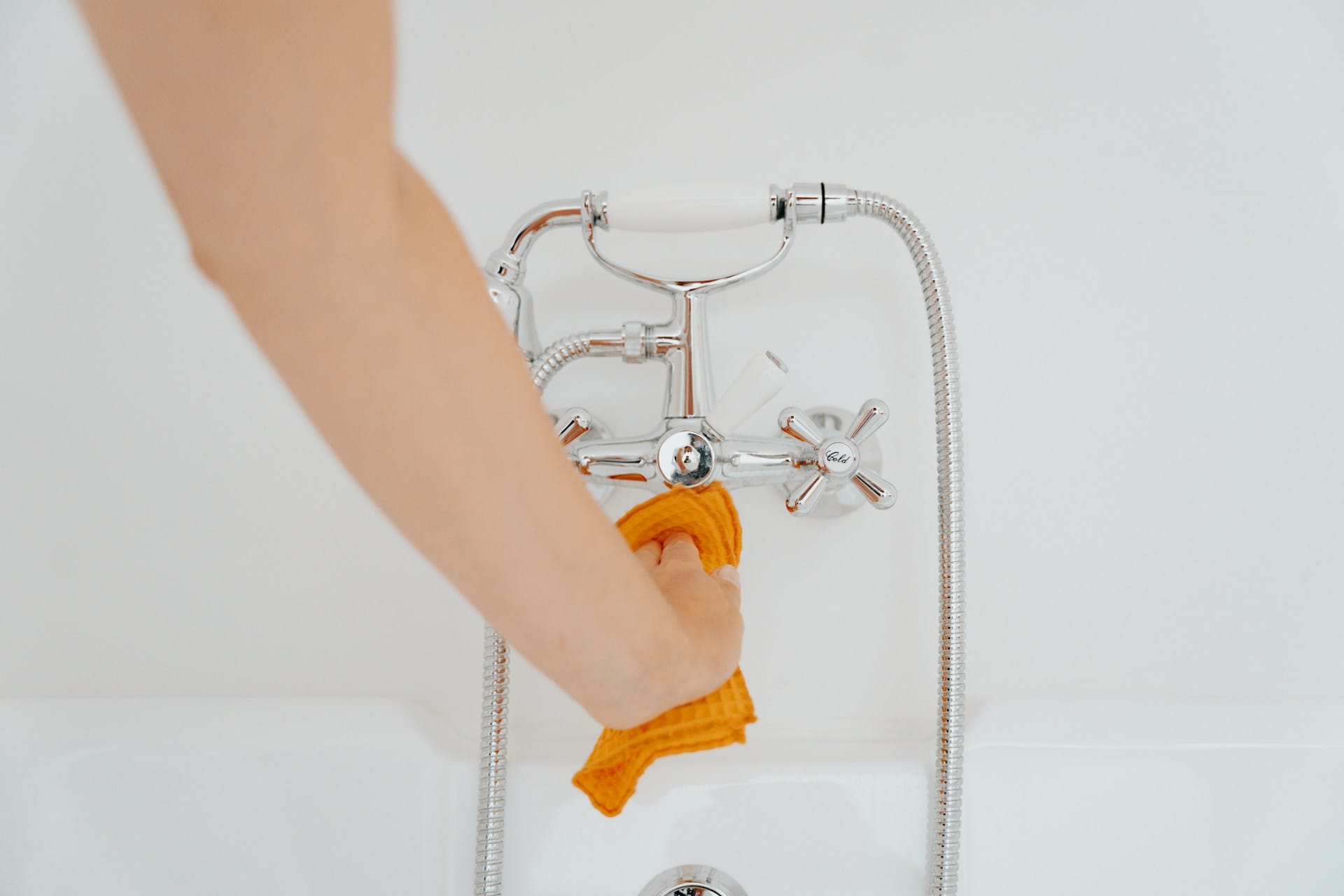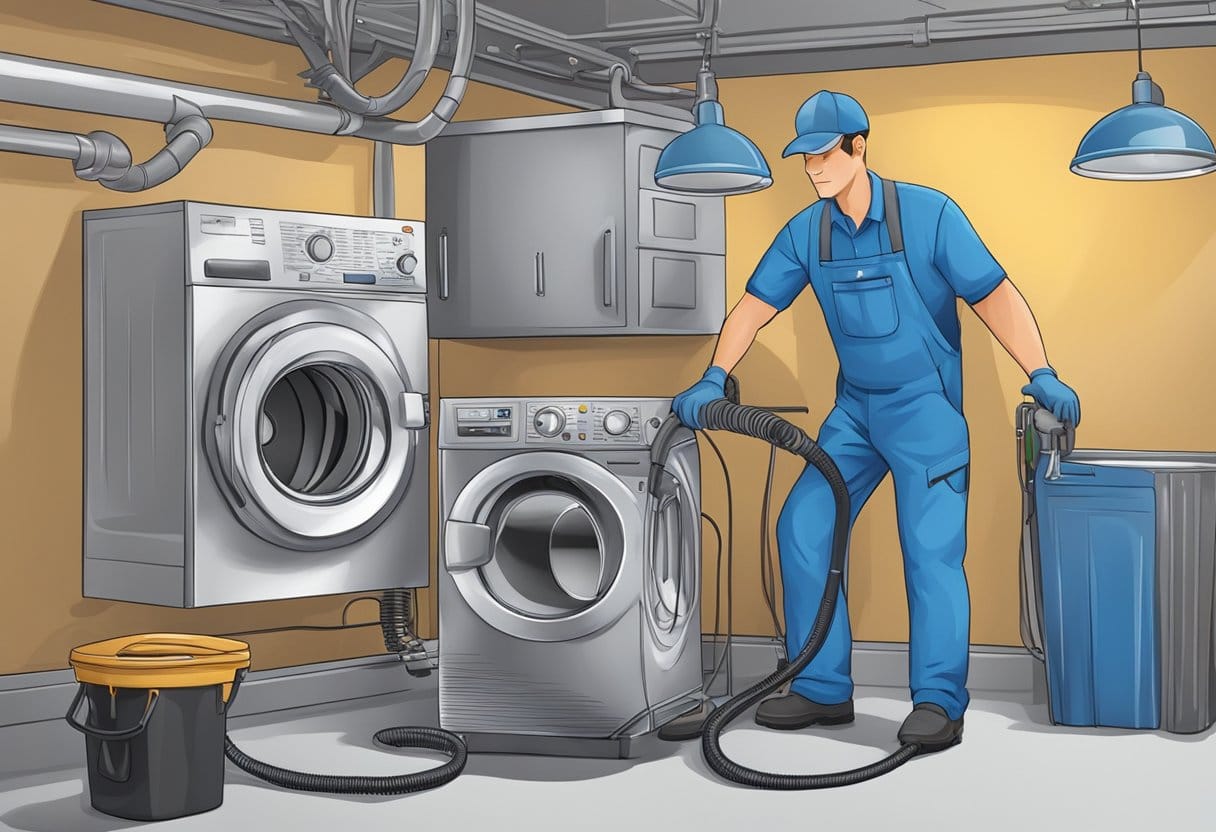Cleaning your extractor fan filters is essential for maintaining a safe and efficient kitchen environment. To effectively clean these filters, you can soak them in hot water with dish soap and baking soda, then scrub them gently with a non-abrasive brush. This simple yet effective method not only removes grease buildup but also enhances the airflow of your extractor fan.
Over time, uncleaned filters can hinder the performance of your kitchen appliances and even contribute to unpleasant odors. Regular maintenance of these filters ensures that your extractor fan operates at its best, which can ultimately lead to improved cooking conditions in your home.
In this article, you will discover various techniques and tips for cleaning extractor fan filters, making the task easier and more efficient. With the right approach, you can keep your kitchen fresh and your cooking appliances running smoothly.
Understanding Extractor Fan Filters
Extractor fan filters play a crucial role in maintaining air quality in your kitchen. They come in various types, function to enhance ventilation, and can accumulate grease over time. Knowing their specifics can help you keep your kitchen environment clean and efficient.
Types of Extractor Fan Filters
There are primarily two types of filters used in extractor fans: grease filters and carbon filters.
- Grease Filters are designed to capture grease and other particulates released during cooking. They can be made of metal mesh or baffle types, which are effective at trapping oils and fats.
- Carbon Filters, also known as charcoal filters, are used primarily in recirculating systems. They absorb odors and harmful gases but do not capture grease.
Knowing which type you have helps in maintaining their effectiveness and ensuring proper kitchen ventilation.
The Role of Filters in Ventilation
Filters are essential for effective ventilation in your kitchen. They work by trapping airborne particles and grease, preventing them from circulating back into your living space.
Benefits of filters include:
- Improved air quality: Filters remove contaminants, ensuring that the air you breathe is cleaner.
- Reduced odors: Carbon filters absorb unwanted odors, making cooking more pleasant.
- Extended lifespan of the extractor fan: Clean filters reduce strain on the fan, promoting efficient operation and longevity.
Regular maintenance of these filters is important for optimal performance and energy efficiency.
How Grease Accumulates
Grease accumulation is a common issue with extractor fan filters. During cooking, oils and fats vaporize, then condense on the surface of the filters.
Factors that contribute to grease buildup include:
- Cooking methods: Frying or grilling typically produces more grease than steaming or boiling.
- Frequency of use: The more often you cook, the more grease settles on the filters.
- Type of filter: Certain filters trap more grease than others.
To manage grease, it’s crucial to clean your filters regularly, ensuring they function properly and maintain good air quality in your kitchen.
Preparing to Clean Your Extractor Fan Filters
Cleaning your extractor fan filters is essential for maintaining efficiency and hygiene in your kitchen. Proper preparation can make the process easier and more effective. Focus on safety first, gather the right tools, and learn how to remove your filters correctly.
Safety Precautions
Before starting the cleaning process, ensure your safety. Turn off the power to your extractor fan by unplugging it or switching off the circuit breaker. This step prevents any electrical hazards while you work.
Wear protective gear, such as gloves and goggles, to shield your hands and eyes from cleaning agents and grease. If you’re sensitive to strong odors, consider wearing a mask to avoid inhaling any fumes emitted from cleaning products. Ensure the area is well-ventilated to help disperse any potential fumes.
Gathering Essential Cleaning Supplies
To efficiently clean your extractor fan filters, gather specific supplies that will aid in the process. You will need:
- Hot water: Essential for breaking down grease.
- Dishwashing soap: Its degreasifying properties are effective for cleaning filters.
- Baking soda: Helps to eliminate odors and enhance cleaning.
- Old toothbrush: A useful tool for scrubbing hard-to-reach areas and crevices.
- Soft cloth or non-abrasive sponge: For drying the filters and cleaning the fan housing.
Make sure to have a bucket or sink ready for soaking the filters in a soapy solution. Having everything organized will streamline the cleaning process.
How to Remove the Filter
Removing the filters from your extractor fan is straightforward. Locate the manufacturer’s instructions for specific guidance, as different models may have unique requirements. Generally, follow these steps:
- Open the fan cover: Depending on your model, there may be clips, screws, or a simple latch to access the filters.
- Carefully pull out the filters: Grasp the filter firmly and remove it from its slot. Avoid bending it to prevent damages.
- Inspect for damage: Before cleaning, check for wear and tear. If the filters are damaged, consider replacing them for optimal performance.
With the filters removed, you can now proceed to clean them effectively, ensuring your kitchen appliance continues to function efficiently.
Step-by-Step Cleaning Process for Grease Filters
Cleaning your grease filters can boost efficiency and improve air quality in your kitchen. Here’s a focused approach to effectively remove grease using various methods.
Initial Rinse and Boiling Water Method
Begin by removing the grease filter from your extractor fan. Rinse it under warm water to remove loose debris. Next, fill a large pot with water and bring it to a boil. Carefully submerge the grease filter in the boiling water for about 10-15 minutes. The heat helps to loosen stubborn grease.
You can enhance this method by adding a few drops of dish soap to the boiling water. After soaking, lift the filter out, and allow it to cool slightly before rinsing it again under warm water. This method effectively reduces grease buildup without harsh chemicals.
Using Baking Soda and Degreasers
For filters with heavy grease build-up, a combination of baking soda and a degreaser can be effective. Create a paste by mixing equal parts of bicarbonate of soda and water.
Apply this paste generously to the greasy areas of the filter and let it sit for 15-30 minutes. The baking soda acts as a gentle abrasive and helps to dissolve grease. After the waiting period, spray the filter with your preferred degreaser.
Rinse the filter under warm water, using a soft cloth or sponge to wipe away any remaining grease. This dual approach ensures thorough cleaning without damaging the metal filter.
Manual Scrubbing Techniques
If residues remain, manual scrubbing may be needed. Use a soft-bristle brush, such as an old toothbrush, to gently scrub the surface of the filter. Focus on areas where grease is still visible.
Make sure to combine your scrubbing with a solution of warm soapy water or a degreaser for the best results. Avoid using abrasive materials that could scratch the filter.
After achieving the desired cleanliness, rinse thoroughly to remove any soap or cleaning agents. Regular manual scrubbing can help maintain the filter and prevent heavy build-up in the future.
Deep Cleaning and Dishwasher Techniques
Cleaning your extractor fan filters effectively enhances kitchen hygiene and appliance performance. Utilizing the dishwasher for metal filters and exploring alternative deep cleaning methods can simplify this necessary maintenance task.
Dishwasher Cleaning for Metal Filters
You can clean metal filters in your dishwasher for an efficient deep clean. Start by removing the filters from your extractor fan, ensuring they are free from any attachments. Place the filters in the top rack of the dishwasher.
Important tips:
- Set your dishwasher to at least 65 degrees Celsius.
- Use a standard dishwasher detergent that is effective against grease.
This method allows the high temperature to break down the grease effectively. Avoid overcrowding the dishwasher; the filters should ideally be the only items in there to ensure optimal cleaning.
Alternative Deep Cleaning Methods
If using a dishwasher isn’t an option, consider alternative methods for cleaning grease filters. A simple soaking solution can be quite effective:
- Fill a large container or sink with hot water.
- Add a mixture of dish soap and baking soda to the water.
Soak the filters for about 15-20 minutes, allowing the grease to loosen. After soaking, use a non-abrasive brush to scrub the filters gently. Rinse thoroughly under warm water and allow them to dry completely before reinstalling.
Using these methods consistently will extend the life of your extractor fan and maintain a cleaner cooking environment.
Cleaning and Replacing Carbon and Charcoal Filters
Maintaining your extractor fan filters is vital for ensuring your range hood operates efficiently. Knowing when to replace carbon or charcoal filters and how to clean non-washable options can significantly enhance air quality in your kitchen.
When to Replace Carbon or Charcoal Filters
Carbon and charcoal filters typically require replacement every 3 to 4 months, depending on usage. Heavy cooking, particularly frying, may accelerate the need for a change. Signs that it’s time to replace the filters include:
- Odor persistence: If you still smell cooking odors after using the range hood, the filters may be saturated.
- Reduced airflow: A noticeable decrease in suction power indicates clogging.
- Visible dirt accumulation: If filters appear dark or greasy, they need replacement.
Refer to your range hood manufacturer’s guidelines for specific recommendations on filter lifespan. Keeping track of filter statuses ensures your kitchen remains fresh and free from smoke and odors.
Basic Cleaning Tips for Non-Washable Filters
For non-washable carbon or charcoal filters, cleaning isn’t an option. Instead, you should focus on periodic replacement. However, you can maintain your range hood’s overall efficiency with these strategies:
- Regular inspections: Check filters every month for signs of buildup.
- Vacuum regularly: Use a vacuum with an upholstery attachment to remove loose debris from the filter surface.
- Wipe down the hood: Keeping the exterior clean prevents grease from entering the filter.
While these steps won’t clean the filters, regular maintenance can prolong the effectiveness of your range hood. Always follow the manufacturer’s instructions for the best results.
Reassembling and Maintaining Clean Extractor Fan Filters
Proper reassembly and regular maintenance of your extractor fan filters are essential for optimal performance. Keeping your filters clean ensures effective ventilation and helps remove grease buildup, which can impact both air quality and appliance longevity.
Properly Reinstalling the Filters
Once your extractor fan filters are clean and dry, it’s crucial to reinstall them correctly. Start by inspecting the filter for any remaining grease or damage before placing it back.
Make sure to align the filter with the correct side facing outwards—usually, the clean side goes towards the outside of the unit. Secure the filter firmly in place, ensuring there are no gaps, which can compromise airflow.
Remember to refer to the manufacturer’s instructions, as each system may have specific requirements. Tightening any screws or clips is vital to ensure that the filter does not fall out during operation.
Routine Maintenance Tips
To keep your extractor fan filters functioning optimally, perform routine maintenance every few months. Here are key tasks to include:
- Regular Cleaning: Clean removable filters every 1–3 months using hot water, dish soap, or specialized cleaners. For stubborn grease, consider baking soda paste.
- Check Ventilation Ducts: Periodically inspect the ventilation ducts for blockages or grease buildup, which can hinder airflow.
- Replace Filters: If you notice any damage or excessive wear on the filters, replace them accordingly to ensure efficient operation.
- Upgrade When Necessary: Consider investing in higher-quality filters designed to trap more grease and particulates, enhancing ventilation and performance.
By following these guidelines, you ensure that your extractor fan operates efficiently, contributing to cleaner air within your home.
Frequently Asked Questions
Cleaning extractor fan filters involves specific techniques and methods to ensure they are maintained effectively. Below are answers to common inquiries regarding the cleaning process, materials, and techniques.
What is the best method for cleaning metal mesh cooker hood filters?
The ideal method for cleaning metal mesh filters involves soaking them in hot, soapy water. Use a degreasing dish soap to assist with removing grease. After soaking for about 15-30 minutes, scrub gently with a non-abrasive brush to dislodge any stubborn grime.
Can I use a dishwasher tablet to clean my extractor fan filters effectively?
Yes, using a dishwasher tablet can be effective. Dissolve the tablet in hot water and soak the filters for a while. This helps break down grease and grime, making it easier to scrub clean afterward.
What are the proper steps to clean the grease filter of an extractor fan above the hob?
Start by removing the grease filter from the fan. Soak it in a mixture of hot water and degreaser for 30 minutes. After soaking, scrub the filter with a non-abrasive brush, rinse thoroughly, and allow it to dry completely before reinstalling.
How can you clean kitchen exhaust fan grease without causing damage?
To clean without causing damage, avoid using harsh chemicals or abrasive materials. Instead, use a mixture of warm water and mild dish soap. A soft cloth or sponge is suitable for wiping down surfaces, and you can use a non-abrasive brush for tough spots.
Is it possible to clean extractor fan filters in a dishwasher safely?
Generally, many metal filters can be cleaned in a dishwasher. However, confirm that your filter is dishwasher-safe by checking the manufacturer’s instructions. Use a gentle cycle and allow the filter to dry completely once cleaned.
What is the correct technique to clean the bathroom extractor fan filter?
Remove the bathroom extractor fan filter carefully. Wash it in warm, soapy water, using a soft cloth to eliminate dust and grime. Rinse thoroughly and ensure it dries completely before reinstalling it back into the fan.


